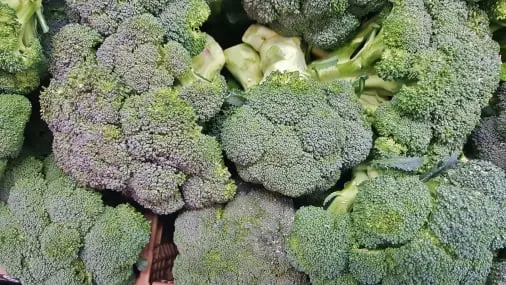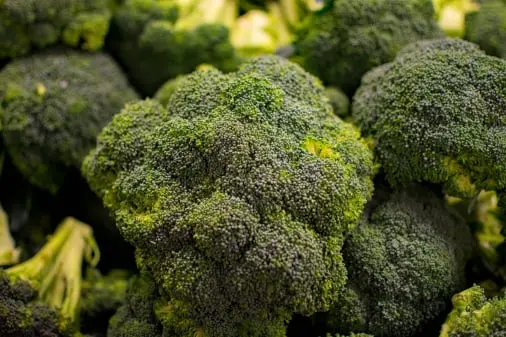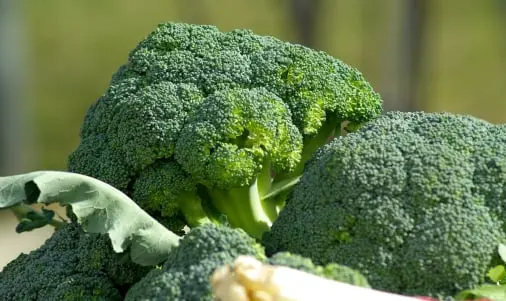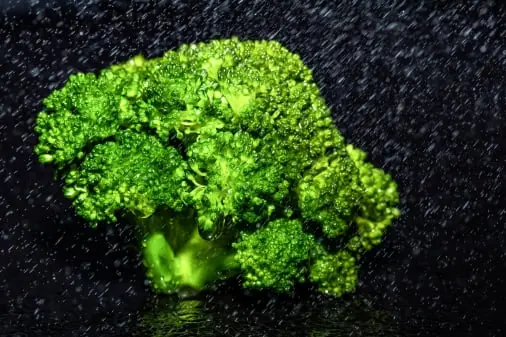Broccoli quality inspection app with AI quality management:
Broccoli quality inspection app with AI quality management for all broccoli processing, packing, and shipping purposes. Manage entire Broccoli packhouse. Reduce quality inspection costs. Eliminate waste, price negotiations, and QC mistakes. Maximize quality consistency.

Broccoli Supplier quality inspection & management
Low temperature is extremely important to achieve adequate shelf-life in broccoli. A temperature of 0°C (32°F) is required to optimize broccoli storage life (21-28 days). Heads stored at 5°C (41°F) can have a storage life of 14 days; storage life at 10°C (50°F) is about 5 days. Broccoli is usually rapidly cooled by liquid-icing the field-packed waxed cartons. Hydrocooling and forced-air cooling also can be used, but temperature management during distribution is more critical than with iced broccoli.

Broccoli Quality inspections during production
View App Specifications.
Freezing Injury. Broccoli will freeze if stored at -0.6°C (30.6°F) to -1.0°C (30°F). This may also occur if salt is used in the liquid-ice cooling slurry. Frozen and thawed areas on the florets appear very dark and translucent, may discolor after thawing and are very susceptible to bacterial decay.
Optimum Relative Humidity
>95%
Rates of Respiration
Broccoli heads have relatively high respiration rates:
Temperature 0°C (32°F) 5°C (41°F) 10°C (50°F) 15°C (59°F) 20°C (68°F)
ml CO2/kg·hr 10-11 16-18 38-43 80-90 140-160
The respiration rates of florets are slightly more than twice the rates of the intact heads.
To calculate heat of production multiply ml CO2/kg·hr by 440 to get Btu/ton-day or by 122 to get kcal/metric ton-day.

Broccoli Quality control & management
Broccoli can be benefitted by 1-2% O2 with 5-10% CO2 atmospheres at a temperature range of 0-5°C (32-41°F). Although under controlled conditions such low O2 levels extend shelf-life, temperature fluctuations during commercial handling make this risky as broccoli can easily produce offensive sulfur-containing volatiles. As a result, a high rate of air exchange is recommended in standard marine container shipments of broccoli. Most modified atmosphere packaging for broccoli is designed to maintain O2 at 3-10% and CO2 at about 7-10% to avoid the development of these undesirable off-odor volatiles.

Daily Broccoli packhouse hygiene checklist
Floret (bead) Yellowing. The florets are the most perishable part of the broccoli head; yellowing may be due to over-maturity at harvest, high storage temperatures, and/or exposure to ethylene. Any development of yellow beads ends commercial marketability. Bead yellowing due to senescence should not be confused with the yellow-light green color of areas of florets not exposed to light during growth, sometimes called "marginal yellowing".
Brown Floret (bead). Is a disorder in which areas of florets do not develop correctly, die and lead to brown discolored areas. This is thought to be caused by plant nutritional imbalances.